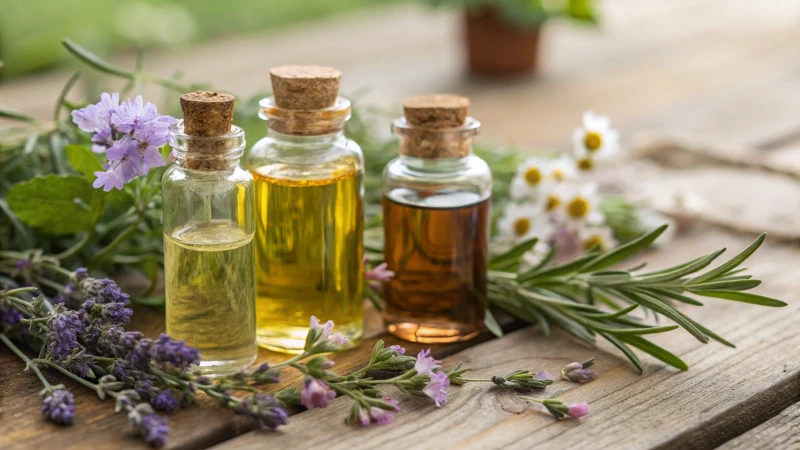
Imagine your favorite essential oils perfectly preserved, their aromas as pure and delightful as the first day you opened them.
Glass packaging for aromatherapy products ensures purity, elevates product appeal, and supports sustainability. It protects against contaminants and allows for creative designs that set brands apart.
Growing up, I always had this fascination with those tiny, beautifully crafted glass bottles that adorned my mom’s dresser. Each one seemed like a little treasure chest of scent. Now, as someone who sources packaging for aromatherapy products, I understand why glass was her choice. Glass not only preserves the integrity of the oils but also enhances the allure of the product. It’s like giving your product a suit of armor against impurities, while also making it feel special and unique.
While glass packaging offers these immediate perks, its real magic is in the details. From innovative coatings to precision molding techniques, these elements enhance both the quality and marketability of aromatherapy products. Let’s dive into how these features make glass an exceptional choice for essential oils.
Glass packaging ensures purity of essential oils.Echt
Glass is non-reactive and prevents contamination, maintaining oil purity.
Plastic packaging offers better sustainability than glass.Vals
Glass is more sustainable due to its recyclability and inert nature.
How Does Glass Keep Aromatherapy Products Pure?
Ever wondered why your essential oils come in those sleek glass bottles? Let me tell you, it’s not just for looks.
Glass ensures purity in aromatherapy products by serving as a non-reactive barrier that shields essential oils from contamination and preserves their properties against light and temperature changes.
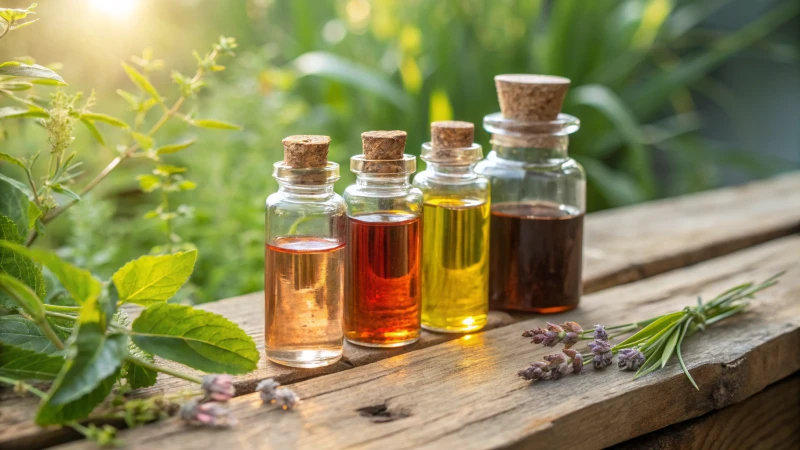
The Non-Reactive Nature of Glass
When I first delved into the world of aromatherapy, I remember being amazed by how vital packaging is to the purity of essential oils. I learned that glass is a non-reactive material, unlike plastics, which can sometimes leach unwanted chemicals into the oils. It’s like having a trusty guardian that stands between the oils and any potential contaminants, keeping them pristine. For example, borosilicate glass1, known for its low metal content, is particularly effective in ensuring the oils remain untouched. You’d be surprised how much peace of mind this knowledge brings!
Protection Against Environmental Factors
Imagine this: you’ve just invested in a beautifully scented essential oil, only to find its fragrance fading away. That’s where glass comes to the rescue again! Glass bottles, especially those in amber or cobalt blue, are fantastic at blocking harmful UV rays that can degrade oils. I once lost a beloved lavender oil because it wasn’t stored properly; now, I swear by colored glass bottles. Moreover, materials like borosilicate glass can handle temperature changes like a champ due to their thermal shock resistance2, so whether you’re in a sweltering summer or chilly winter, your oils are safe.
Advanced Coating Technologies
In my journey to find the best packaging solutions, I stumbled upon some fascinating advances in glass coatings. Imagine a coating that keeps your bottle clean from oily residues or even makes it glow in the dark for that extra wow factor. Technologies like chemical vapor deposition (CVD) or plasma coatings can do just that. This isn’t just about aesthetics; it also keeps high-viscosity oils from building up inside the bottle, which is a huge bonus if you’re like me and hate dealing with sticky messes.
| Coating Type | Benefits |
|---|---|
| CVD Coating | Repels oil residues |
| Plasma Coating | Enhances visual appeal |
Sustainability and Eco-Friendly Advantages
Embracing sustainability has always been important to me, and glass fits perfectly into this ethos. It’s recyclable and many suppliers are now moving towards low-carbon production methods. I’ve heard about suppliers in France and the Netherlands leading this charge towards carbon-neutral manufacturing processes, which makes my eco-friendly heart sing! Plus, requesting carbon footprint certifications3 can be a smart move for anyone looking to market their products as environmentally conscious.
Combining all these benefits, glass is not just a container; it’s a protector and preserver of purity and quality in aromatherapy products. Trust me, once you switch to glass, you won’t look back!
Glass prevents chemical leaching in essential oils.Echt
Glass is non-reactive, preventing chemicals from leaching into oils.
Plastics are more effective than glass in preserving oil purity.Vals
Plastics can leach chemicals, while glass provides a stable barrier.
How Does Custom Molding Elevate Your Brand?
Ever noticed how a single glance at a product can spark recognition and trust? That’s the magic of custom molding.
Custom molding is a game-changer in brand differentiation, enabling companies to craft unique packaging that resonates with their brand essence and captivates consumers. This distinctive approach fosters brand loyalty and enhances recognition in a competitive marketplace.
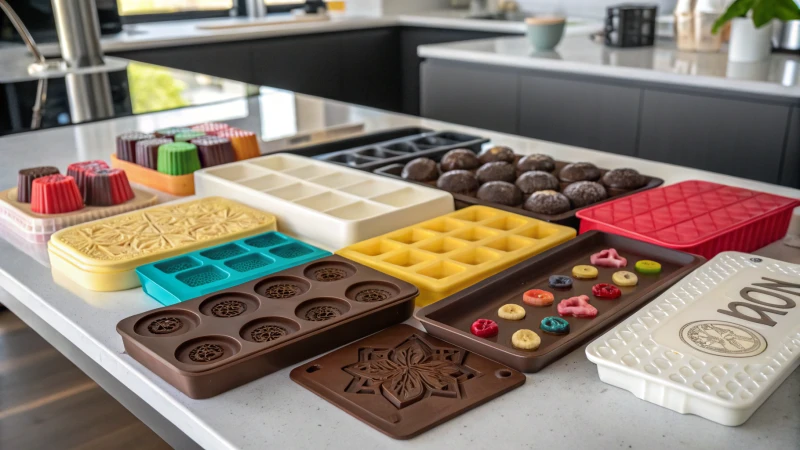
Creating Unique Visual Identity
You know that moment when you pick up a product, and it just feels like it’s "them"? That’s what custom molding does—it transforms packaging into a brand’s storyteller. Imagine a bottle whose unique shape or texture instantly makes you think of your favorite brand, much like how the Coca-Cola bottle does. It’s not just packaging; it’s a memory that sticks.
A distinctive shape4 or texture can become synonymous with the brand itself, fostering instant recognition. Consider the iconic contoured bottle of Coca-Cola as a classic example5.
| Functie | Impact on Brand |
|---|---|
| Unique Shapes | Enhances recall |
| Textured Surfaces | Improves tactile experience |
| 3D Logos | Reinforces brand identity |
Enhancing Consumer Experience
When I first held an ergonomically designed bottle, it was like a revelation. Custom molding lets brands add features that make packaging not only functional but enjoyable to use. It’s no surprise that when you enrich the unboxing experience, like some aromatherapy brands do, customer satisfaction soars.
Through custom molding, brands can add ergonomic features to their packaging, improving usability and customer satisfaction6. Aromatherapy brands report a significant increase in consumer preference when tactile features enhance the unboxing experience7.
Supporting Sustainability Goals
We all know sustainability isn’t just a trend—it’s a responsibility. With custom molding, brands can choose eco-friendly materials and efficient designs that reduce waste. Using CNC-machined molds, for instance, not only ensures precision but also cuts down on material waste. It’s about aligning with those eco-conscious values consumers hold dear.
In an era where sustainability is paramount, custom molding can align packaging with eco-friendly initiatives. By opting for sustainable materials and efficient mold designs, brands can reduce waste8 and appeal to environmentally conscious consumers.
Facilitating Brand Storytelling
Every brand has a story to tell, and custom molding is the perfect medium. Whether it’s a vintage vibe or a sleek, modern look, these design elements help communicate what the brand stands for. It’s about creating a connection that goes beyond the product itself.
Custom molding allows for intricate design elements that can convey a brand’s narrative. Whether it’s a vintage aesthetic9 or futuristic design, these elements help communicate the brand’s values and ethos to consumers.
Did You Know?
Luxury aromatherapy brands using precision molding report up to a 40% increase in consumer preference.
Leveraging Competitive Advantage
In today’s crowded markets, standing out is crucial. Custom molding gives you that edge by allowing your products to boast features others simply can’t replicate. For consumers seeking something special, this uniqueness is often the deciding factor.
In saturated markets, custom molding serves as a powerful tool for differentiating products. By incorporating unique elements that competitors lack, brands can establish a competitive edge and capture the attention of discerning consumers looking for something special10.
Custom molding enhances brand recognition.Echt
Distinctive shapes and textures in packaging create instant brand recall.
Sustainable custom molding increases material wastage.Vals
Eco-friendly designs reduce waste, aligning with sustainability goals.
Why Is Temperature Tolerance Important for Essential Oils?
Ever wondered why your essential oils don’t quite smell the same after a hot summer’s day?
Temperature tolerance is crucial for essential oils because it helps preserve their chemical integrity and therapeutic properties. Exposure to extreme temperatures can cause them to degrade, altering both their effectiveness and aroma.
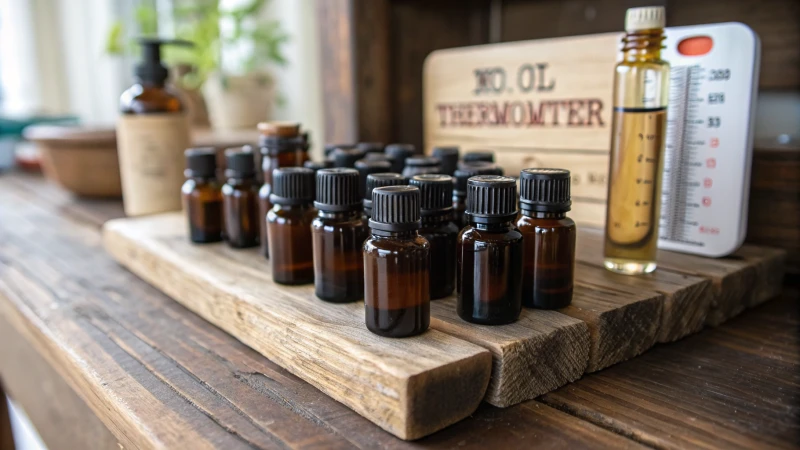
Impact of Temperature on Essential Oils
I remember the first time I learned about temperature sensitivity with essential oils. I had left a bottle of my favorite lavender oil in the car during a particularly scorching summer day. Later, when I opened it, the aroma was muted, almost unrecognizable. It was then I realized how volatile these oils could be.
Essential oils are volatile compounds, meaning they can easily evaporate or degrade under certain conditions. When exposed to high temperatures, essential oils can lose their efficacy due to the breakdown of their chemical components. This degradation can affect both the scent and therapeutic properties, making temperature control vital.
| Temperature Range | Effect on Essential Oils |
|---|---|
| Below 15°C | May cause cloudiness but no harm. |
| 15°C – 25°C | Optimal storage conditions. |
| Above 25°C | Risk of chemical breakdown and spoilage |
How to Store Essential Oils Safely
To keep the integrity of essential oils intact, I’ve learned it’s important to store them in cool, dark places. Opt for containers made from materials like dark glass11, which prevent light exposure that can exacerbate heat effects. Keeping oils in a controlled environment helps in preserving their original properties.
Temperature Tolerance in Different Oils
Over time, I’ve noticed that different oils have varying levels of heat tolerance. Citrus-based oils like lemon or orange seem more prone to heat degradation compared to others such as lavender or rosemary12. Understanding these differences allows for better storage practices and ensures maximum potency.
Monitoring Climate and Usage Environment
For those of us who love using essential oils in various climates, it’s crucial to consider ambient temperatures during transport and storage. This is particularly important if you’re exporting or importing oils. It’s worth looking into packaging solutions that offer thermal resistance13 to ensure oils remain stable even in fluctuating temperatures.
Ensuring temperature tolerance not only preserves the oils’ benefits but also extends their shelf life. Being aware of these factors has helped me—and can help you—make informed decisions about purchasing and utilizing essential oils effectively.
Essential oils degrade above 25°C.Echt
High temperatures cause chemical breakdown in essential oils, reducing efficacy.
Citrus oils are more heat tolerant than lavender.Vals
Citrus oils are less heat tolerant, degrading faster than lavender or rosemary.
How Can Glass Packaging Support Sustainability Goals?
Hey there! Ever wondered how something as simple as glass can be a game-changer for our planet’s health?
Glass packaging supports sustainability goals by being 100% recyclable, reducing waste, conserving resources, and promoting carbon neutrality. Its durability and contamination-free nature make it a superior choice for eco-conscious brands.
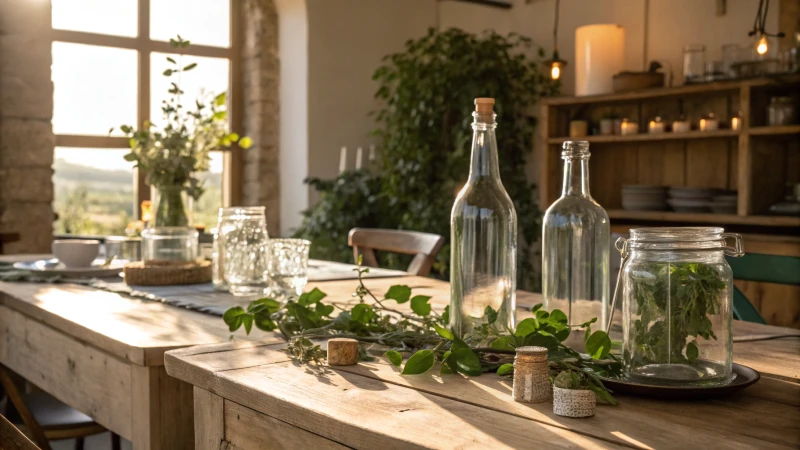
Let me take you on a journey into the world of glass packaging and how it’s paving the way for a greener future. I remember the first time I delved into the nuances of glass as a sustainable material—its infinite recyclability was a revelation.
The Recyclability Advantage
Glass is like that reliable friend who’s always there for you. It’s 100% recyclable and can be reused endlessly without losing its quality or purity. I was amazed to learn how this process not only conserves raw materials but also significantly cuts down energy consumption, aligning with carbon neutrality14 goals. It’s like hitting the sustainability jackpot! Recycling glass also means we’re keeping landfills less cluttered, which totally supports circular economy models that I’m so passionate about.
Durability and Reuse
The durability of glass is incredible. It stands up to multiple reuse cycles, reducing the need to manufacture new packaging. This effectively lowers the carbon footprint from producing and transporting new products. Brands can promote reusability by offering refillable glass containers—it feels good to know they’re doing their part to enhance sustainability efforts.
Preserving Product Quality
Here’s another thing I love about glass: it’s an excellent barrier against moisture, air, and contaminants. This helps extend product shelf life and cuts down on food waste. By maintaining product integrity, glass packaging also reduces the need for preservatives and additives—right in line with what eco-conscious consumers like us prefer.
Supporting Carbon Neutrality
Did you know that glass production is evolving to be more eco-friendly? Some manufacturers are using renewable energy sources and low-carbon technologies. I find it fascinating how these companies are achieving carbon neutrality with innovative furnace designs and energy-efficient practices. By choosing suppliers with these credentials, brands can really boost their environmental credentials15.
Comparison with Plastic Packaging
Let’s face it—plastic just can’t keep up with glass. It can only be recycled a few times before it starts contributing to microplastic pollution. Glass, on the other hand, maintains its quality no matter how many times it’s recycled.
| Functie | Glas | Kunststof |
|---|---|---|
| Recyclability | Infinite | Limited |
| Reuse Potential | High | Moderate |
| Contamination Risk | Low | High |
| Environmental Impact | Supports carbon goals | Contributes to waste |
Industry Innovations
Some manufacturers are getting really creative with glass by exploring advanced coatings to make it even more sustainable by reducing energy consumption during production. These innovations position glass as a leading choice for brands committed to achieving sustainability targets.
By embracing these strategies, companies not only make a substantial contribution to global sustainability efforts but also attract eco-conscious consumers like you and me who are always on the lookout for sustainable packaging solutions16.
Glass packaging is 100% recyclable.Echt
Glass can be endlessly recycled without losing quality, unlike plastic.
Glass packaging increases landfill waste.Vals
Recycling glass reduces landfill waste by conserving resources and energy.
Conclusie
Glass packaging for aromatherapy products preserves purity, enhances brand appeal, and supports sustainability. Its non-reactive nature protects essential oils from contaminants and environmental factors, ensuring quality and longevity.
-
Borosilicate glass is known for its low metal content, ideal for maintaining essential oil purity. ↩
-
Understanding thermal shock resistance helps ensure glass can endure temperature fluctuations without breaking. ↩
-
These certifications help brands demonstrate their commitment to sustainability. ↩
-
Discover how unique packaging shapes enhance brand recognition and make products stand out on shelves. ↩
-
Explore the evolution of Coca-Cola’s iconic bottle design and its impact on brand identity. ↩
-
Learn how ergonomic features in packaging improve consumer satisfaction and usability. ↩
-
Understand why enhancing the unboxing experience is crucial for consumer engagement and loyalty. ↩
-
Explore sustainable materials that reduce waste and align with eco-friendly goals. ↩
-
Discover how vintage design elements in packaging help convey brand narratives. ↩
-
See how custom molding provides a competitive edge in product differentiation. ↩
-
Dark glass bottles protect essential oils from UV light damage, which can degrade their quality over time. ↩
-
Understanding how lavender oil tolerates temperature changes can help you store it properly and maintain its therapeutic properties. ↩
-
Thermal-resistant packaging can help maintain the quality of essential oils during transportation in various climates. ↩
-
Explore how recycling glass reduces carbon emissions and supports sustainable goals. ↩
-
Discover how glass manufacturers achieve carbon neutrality. ↩
-
Find out which packaging options align with sustainability objectives. ↩



